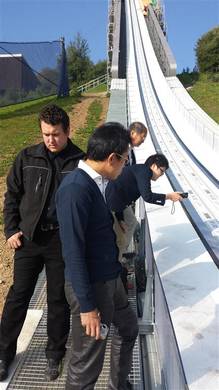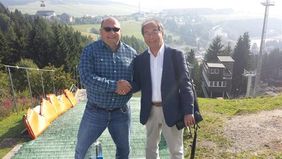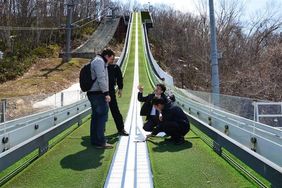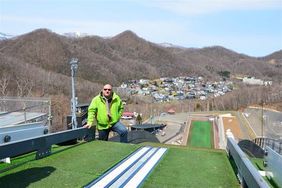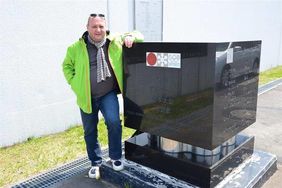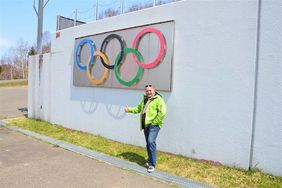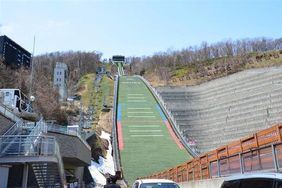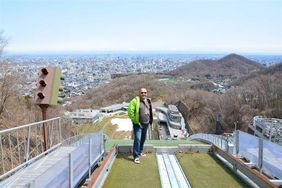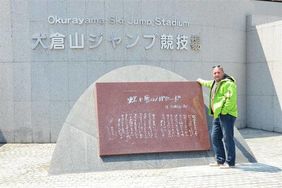RASCHAU/SAPPORO, 1st of October 2013 – Two of the most important ski jumps in Japan are called Ōkurayama and Miyanomori – they are the normal and large ski jumps where the Olympic champions of 1972 were determined. The winners there were: Yukio Kasaya from Japan and Wojciech Fortuna from Poland. Since these days over 40 years have passed but for the FIS ski jumping world cup Sapporo is firmly established; also, the Nordic ski world championship in 2007, the first ever held in Asia, on the northernmost island of Japan, took place in Hokkaido.
“There is so much tradition and history behind it – thinking about these places gives me goose bumps every time”, says Peter Riedel. In the last few days, it was officially announced that his company, Peter Riedel GmbH, together with his Japanese business partners has won the tender for the covering of the inrun tracks. “I am absolutely delighted about this – to me, being allowed to work on Olympic jumps, and being able to contribute to their design and renovation is a reward for the work I have done so far”, explains Riedel.
More than 8200 kilometres are between Raschau-Markersbach in Saxony and Sapporo – therefore, it is the company’s furthest building site from the headquarters. “This renders the daily commute impossible”, jokes the company owner.
It can be said that Riedels contacts in the Japanese ski jumping scene are good and close at all levels. He is personally on site frequently to get an idea of the situation in Sapporo. The contacts to the Japanese ski federation are excellent. Logistic support is provided to Japanese athletes who come to Europe for training in order to prepare for the next competitions in, for example Hinzenbach, another ski jump with a “Riedel track”. Peter Riedels company is already working in Hanwa and Zao.
“In Sapporo, we will install the best equipment that is available at our company at the moment”, explains Peter Riedel. “Our friends from Japan were especially convinced of the porcelain nubs in the summer track – they are indeed unbeatable because this material creates the smallest friction between the inrun track and the ski.”
Therefore, two of the most important ski jumps in Japan will experience a valuable relaunch which will be co-designed by a company based in the Erzgebirge (ore mountain) in Saxony. Sapporo is gearing up for new tasks, more world cup competitions and who knows, maybe major events in the future.



